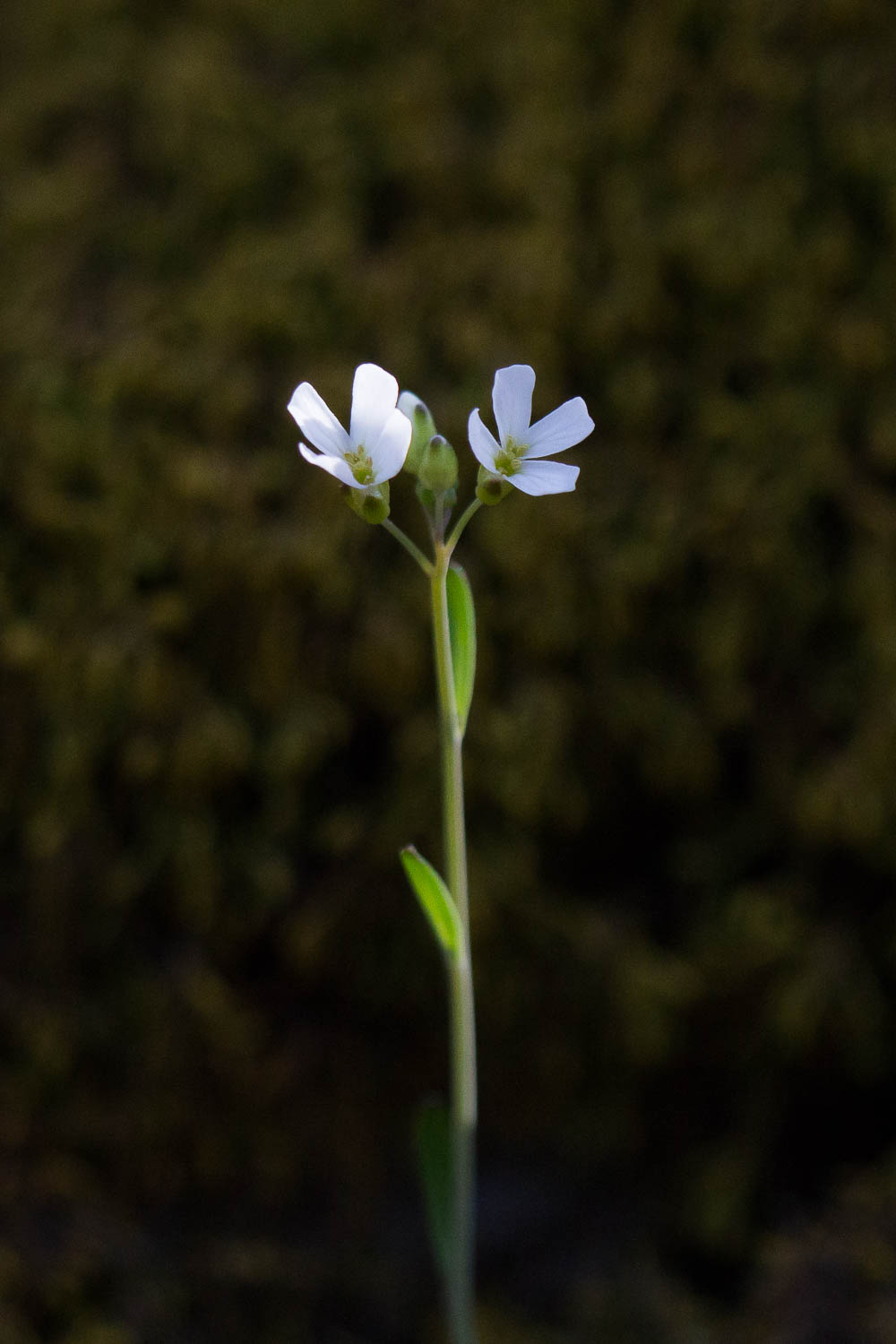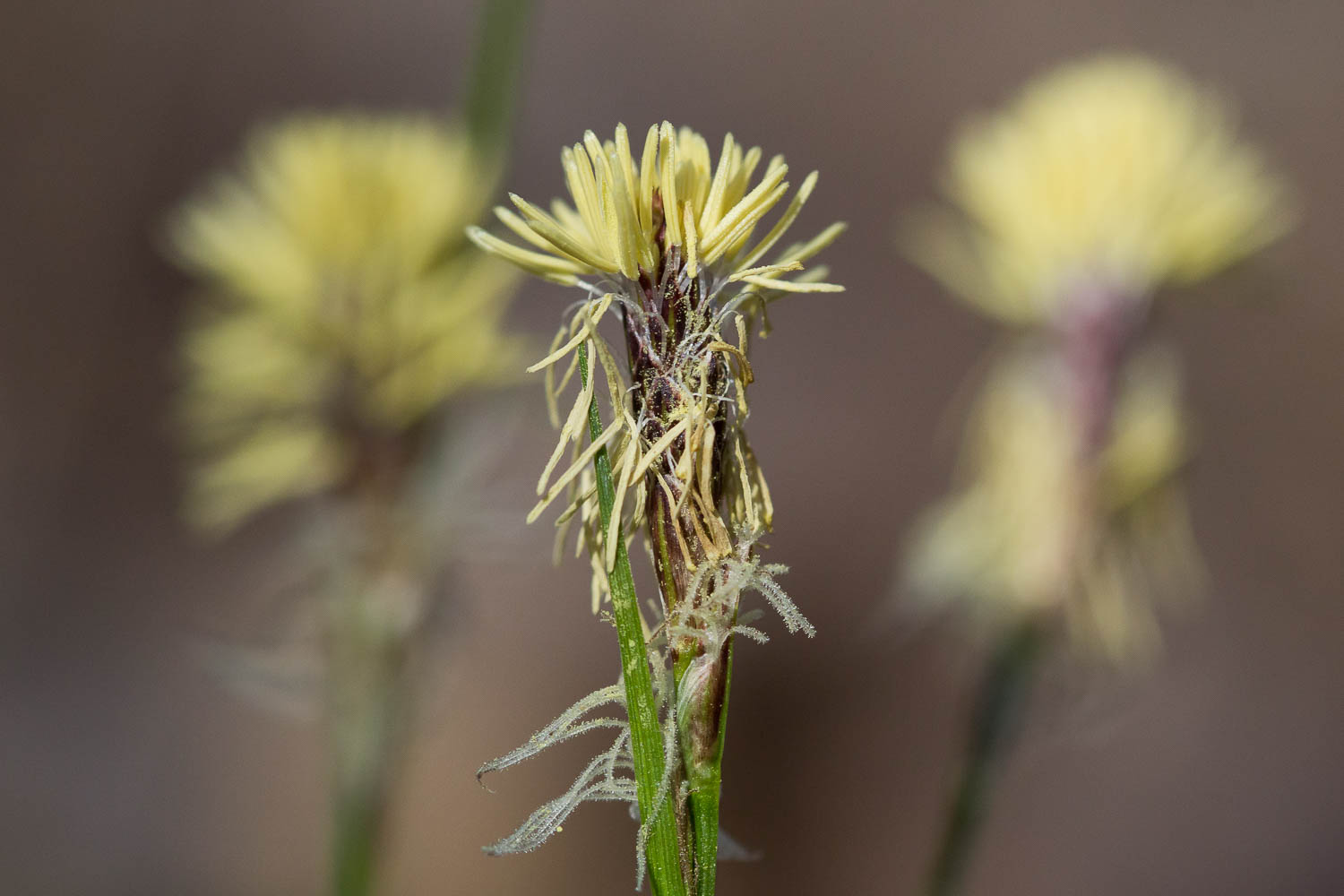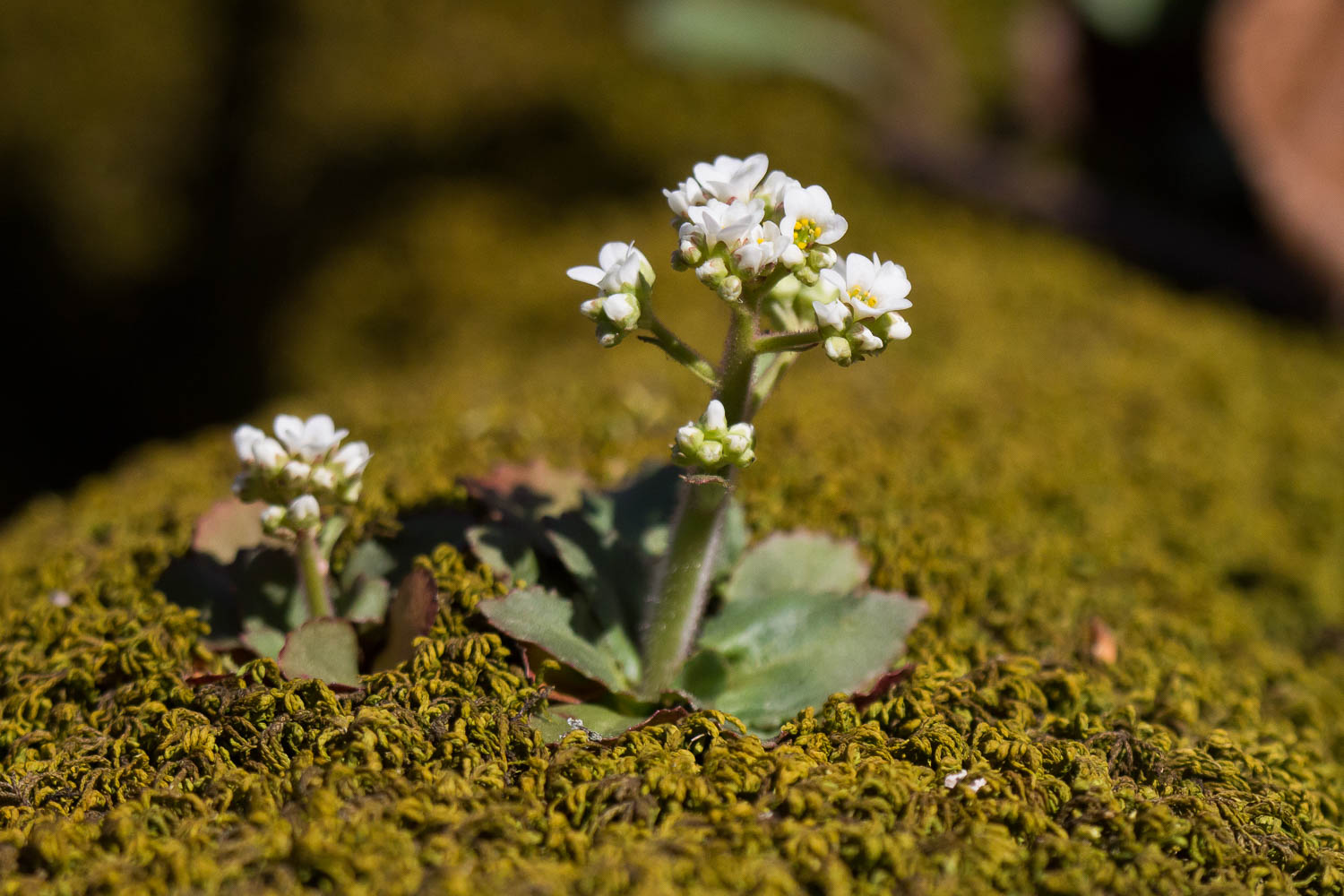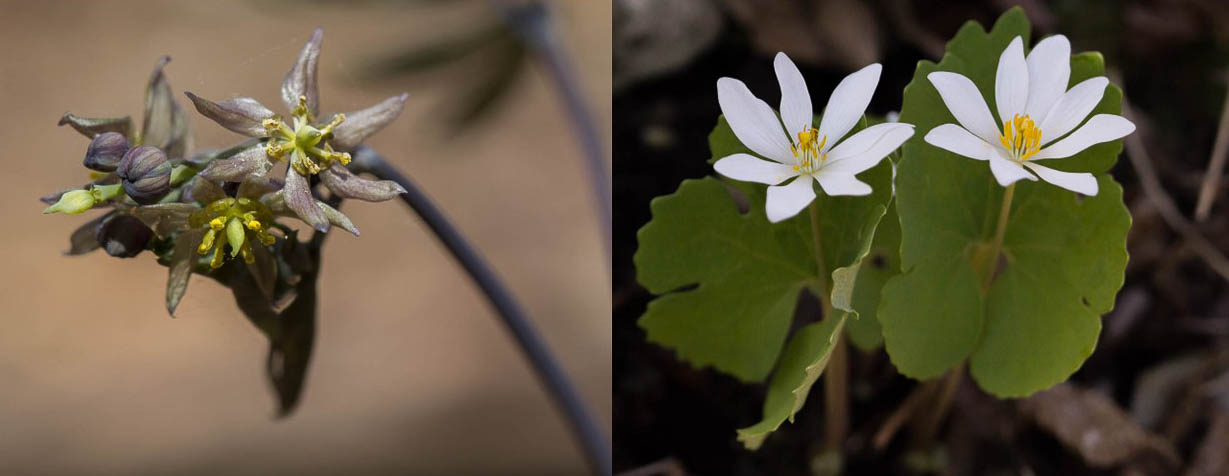By Kyle Bradford
Last week most of the Farmscape Ecology crew joined the geology and earth science communicator Becky Nesel to share knowledge of plants and geology. Our location was a forest in Canaan with mostly dry, calcium-rich woods. The calcium around Canaan comes from the Stockbridge Formation, which consists primarily of marble created by an ancient seabed that was metamorphosed under high pressure. In calcium-rich woods, you will find an impressive diversity of plants, including some rarer species. For this Wonder Moment, I will run through some of the plants we saw on our walk. I include some generalist species that you find in a variety of forests along with some uncommon species that are more restricted to calcium-rich sites.
This dainty, native mustard (family Brassicaceae) is the Lyreleaf Rockcress (Arabidopsis lyrata). Just a few miles away in Massachusetts this plant is considered state endangered, limited to calcium-rich rock outcrops, ledges, and cliffs in Berkshire County. In New York, the populations seem to be secure, but it’s not particularly common. It’s known to occur throughout the Hudson Valley.
A few sedge species were flowering including Pennsylvania Sedge (Carex pensylvanica). A common sedge of dry, rich woods where it can create a lawn-like covering on the forest floor.
Early Saxifrage (Micranthes virginiensis) isn’t necessarily a calcium lover but it does like growing on the thin soils of rock outcrops, ledges, and cliffs.
Leaves and flower bud of Trillium (Trillium sp.). Trillium can be found in a variety of forest types and is very common in the region.
The native shrub American Fly Honeysuckle (Lonicera canadensis) was flowering and is uncommon in the Hudson Valley.
Hispid Buttercup (Ranunculus hispidus) is an uncommon plant often associated with calcareous soils.
This calcium-rich rock outcrop had an impressive covering of Walking Fern (Asplenium rhizophyllum). This fern is most definitely a calciphile, and is rare in the Hudson Valley.
A closer look at Walking Fern.
Blue Cohosh (Caulophyllum thalictroides) left, and Blood-root (Sanguinaria canadensis) right, were patchy in the forest. These species may have been associated with the moister areas we visited.

Last but not least, we have the rare Large-flowered Bellwort (Uvularia grandiflora), which is mostly found in sites with calcium-rich soil.
If you are curious to learn more about geology and its connection to plants. We are teaming up with Becky Nesel to offer two upcoming geology/plant walks! You can learn about these opportunities here.










wow- these are amazing and so beautiful!!! we still have snow on the ground, but these made me know spring is coming. thank you for sharing your walks and all the beauty with us
LikeLike
Thanks, Pat! Hopefully, the landscape you’re in will defrost soon and you’ll be finding some beautiful spring flowers for yourself!
LikeLike
i hope so!!!!!! rain just started and snow might be coming! thanks for sharing all the beauty you see
LikeLike